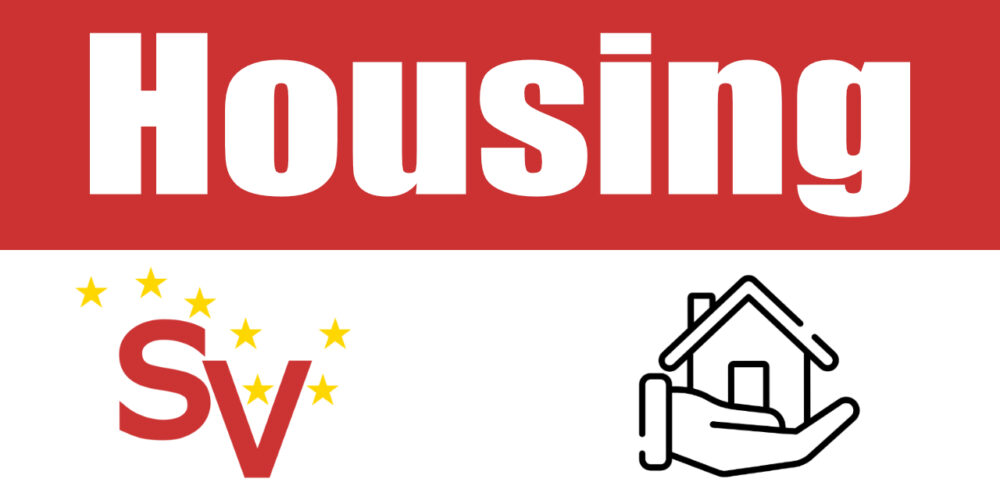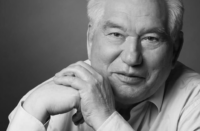This is not the first time the citizens of Ireland have been faced with a housing emergency. Back in the 1930s and 40s it was solved by building public housing—and it can be done again.
From the 1930s until the 1950s, 55 per cent of all housing was built by the state. In 1961, 18½ per cent of all citizens lived in a publicly owned home.
Last year the Government aimed to get 33,000 homes built. They didn’t: they managed only 20,443; and of those a mere 1,198 were built by local authorities.
Property-ownership is the key to the housing crisis. Who owns it controls it, be it price, rent, type, size, location, or supply.
In the early days of the state, when Fianna Fáil still held some revolutionary ambitions, hundreds of thousands of publicly owned homes were built for the citizens. These provided shelter for our citizens and managed to eradicate the squalor left behind by the British in the form of the slums and tenements in our cities and towns.
Mistakes were made, of course. Some housing estates were built without any facilities for the residents, such as shops, schools, or transport. But many of these homes were of high quality, and tens of thousands of families have been reared in local authority homes for many decades. What they may have lacked in facilities they made up with the communities that developed in them. The major mistake that was made was the income limit that was established to qualify for a council house.
This building of public housing by the state did not happen by accident. The state was forced to act, as the tenements were overcrowded and in a desperate condition, affecting the health of the residents, and they were literally collapsing and killing people. We had the worst slums in Europe.
Like all capitalist governments, when faced with an emergency they adopted socialist models to solve the crisis. They made the decision to build and provide homes for the citizens at differential rent and to end the squalor left by the British.
But the propertied class and the Church had different ideas. This could not be allowed to happen in the land of saints and scholars, holy Catholic Ireland—or, more importantly, capitalist Ireland; so the lackeys and protectors of capital spoke up.
In 1952 Senator James Tunney of the Labour Party said, “I am a firm believer in private ownership, because it makes for better citizens, and there is no greater barrier against communism.”
In 1967 Archbishop Cornelius Lucey of Cork told de Valera that public housing was akin to Bolshevism, while a property-owning citizenry would make more compliant and obedient citizens. Ironically, there is now a public park in Cork named after Archbishop Lucey, in which a number of people live in tents, homeless as a result of housing policy. So this is what Lucey’s contribution has ended up doing for the housing of the citizens of Ireland.
De Valera began selling off council houses to tenants at knock-down prices twenty years before Thatcher did it in Britain. They were sold at a small fraction of their worth and of what they cost to build. Those who did not want to buy were offered a lump sum, a bounty to move out of the council home. The sale to tenants denied all these homes to use by future generations of citizens. The lump sums brought the building of new homes to a trickle, as existing houses were recirculated prematurely to those on the waiting-list.
This was the beginning of the end for public housing and the start of the commodification of the provision of homes for citizens, being transferred to the private sector in a direct transfer of wealth, using the working class as a vehicle by way of loans and mortgages to the propertied class.
Saddled with thirty or forty years of mortgage, the citizens became obedient; the mortgage had to be paid on the home that the bank in reality owned. They would eventually own it for a few short years before they died—till debt do us part. This created an income stream for the banks, builders, and speculators—the capitalist class—that was denied to them by public housing, and starved the local community of this valuable income that the citizens spent locally when they had rented accommodation from the council.
This still did not satisfy the capitalist class when eventually the mortgages began to be paid off. Years later the income stream from mortgage repayments would slow down to a trickle, or stop. A trickle down might be fine, but the capitalist class always want wealth to flood up.
Something had to be done to open up this income stream again.
From the 1970s the state, as well as selling homes back to tenants, withdrew from building public housing. Homes were now being built almost exclusively by the private sector, reopening the lucrative income stream.
We can see from the 2016 census that this led to a situation where private rented accommodation is now the main form of tenure in our cities and towns as workers are priced out of the market by developers, with the insatiable greed of the propertied classes pushing rents always up.
The 2016 census also tells us that overcrowding has increased, for the first time in fifty years. This is the reality of what government housing policy has achieved.
There is no housing crisis for the ruling class, only for the citizen. The crisis is the housing policy that causes all these other symptoms, be it high rents, homelessness, overcrowding, squalor, or despair.
The government housing policy is working very well for those it was designed to benefit: landlords, builders, bankers, developers—the business class. It is not caused, as some would have us believe, by either cronyism or corruption.
The system is not broken: this is the way it is designed. It’s called capitalism.






